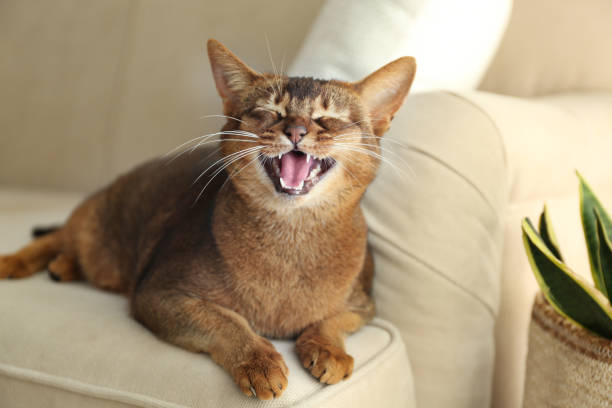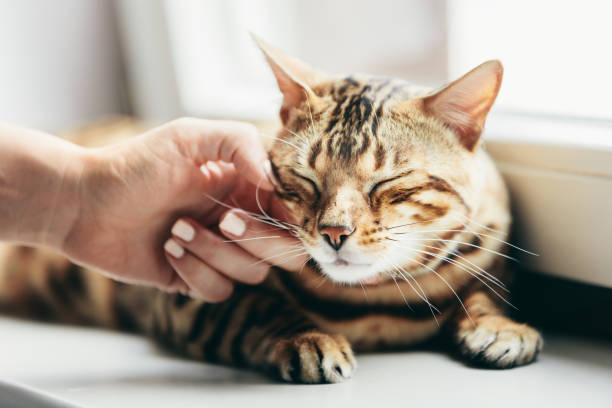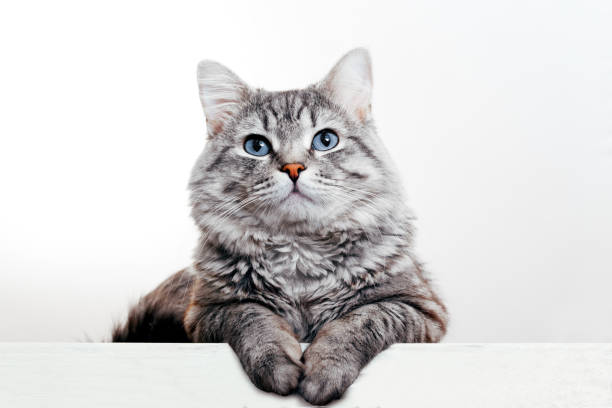Signs of a Happy Cat
Signs of a happy cat include purring, relaxed body posture and slow blinking. A kneading cat is another good indication of happiness.
Other vocalizations that can indicate happiness include trilling and chirps. However, yowling and screeching can signal fear or a health concern.
A cat with a healthy, well groomed coat is another sign of a happy cat. Avoid overgrooming your cat though, as this can lead to stress.
Meows
When a cat meows infrequently and the meows they do make are low-pitched and friendly, that’s a good sign that your cat is content. They may also chatter or chirp when they see something exciting. A curved tail and a relaxed posture are other signs that your kitty is feeling happy.

A cat that rolls over to show their belly is showing you that they trust you enough to expose this vulnerable part of their body. This is a signal that they’re happy to receive belly rubs or head scritches from you.
Another telltale sign is if your kitty dribbles drool when they’re eating, playing or being petted. It can also mean that they’re happy, but it can be a sign of stress or illness too, so be sure to pay attention to the context.
Purrs
A cat that purrs while settling into a comfortable position – either alone or cuddled up with you – is a good sign that they’re feeling content. However, cats can also purr when they’re unwell or in pain so the context is important.
When they’re kneading their paws, sometimes called making biscuits, in front of you, this is another classic sign of a happy cat. They’ll usually be relaxed, with their eyes closed and looking like they haven’t a care in the world.
Another sure sign of a happy cat is if they show their belly to you. This is a sign that they trust you and are at ease showing their most vulnerable areas.

Finally, if your cat has a healthy appetite and is eating normally, it’s a good sign that they’re feeling happy. On the other hand, if they’re eating less than usual or seem reluctant to eat, this could be a sign that they’re stressed or sick. It’s always worth consulting a vet to get a definitive answer. The vet will be able to diagnose the problem and recommend treatments as necessary.
Tail flicks
Tail movements are important to watch for because they reveal a lot about your cat’s mood. When a tail is straight up in the air, it signals happiness and a willingness to interact with humans or other cats. This position also shows that your feline is non-confrontational, which decreases the chances of a conflict.
A gently waving tail is another sign of a happy feline. This motion, which is often combined with a relaxed body posture and purring, indicates that your pet is happy to see you. It’s also a good indication that they are ready to play or cuddle.
On the other hand, if your cat’s tail is flicking quickly back and forth, it’s likely that it’s feeling annoyed. This type of movement, coupled with pinned ears and a tense body posture, may indicate that your cat is insecure or angry. It’s best to give your cat some space if you notice this behavior.
Eyes
If your cat locks eyes with you and slowly blinks, this is a sign that they trust and love you. You can return this gesture by slow blinking back at them.
Wide pupils that dilate quickly can indicate excitement. Your cat may be about to pounce on their feather wand toy or catch their prey. Cats also often widen their pupils when they’re preparing to strike in aggression or fear.

If your cat’s pupils stay narrow like slits, this is a sign of happiness and contentment. They’re in a relaxed mood and are likely displaying other happy body language signs such as purring, showing their belly or kneading with their paws.
Body language
Although a cat’s body language can vary from one individual to the next, there are some common happy cat clues. For instance, a cat’s ears typically are back when they are in a calm, contented state and may wag with their tips crooked in a “howdy” greeting to people they trust.
A kitty may also groom themselves or other cats and pets when they are happy. This is a sign of confidence and a healthy relationship. And, a happy cat is often playful. Whether this is an exuberant sprint or a kitty wrestling match, it all indicates happiness!
Finally, a happy cat will sleep in familiar places and with humans they love and trust. Similarly, a cat may seek out other cats for nap-buddying, indicating happiness with their relationships. On the other hand, distance-increasing behaviors, such as your kitty crouching and moving away from you when you attempt to pet them, indicate stress or fear. This type of behavior may be accompanied by a dilated pupil and tail swishing.

